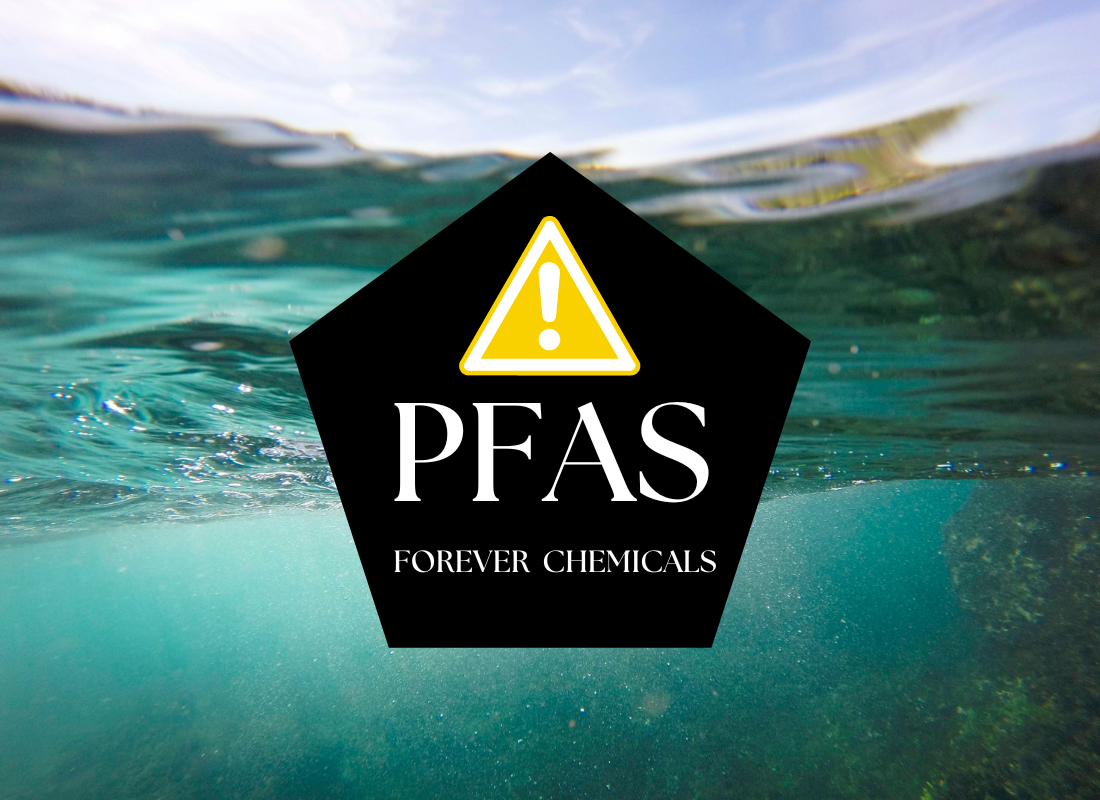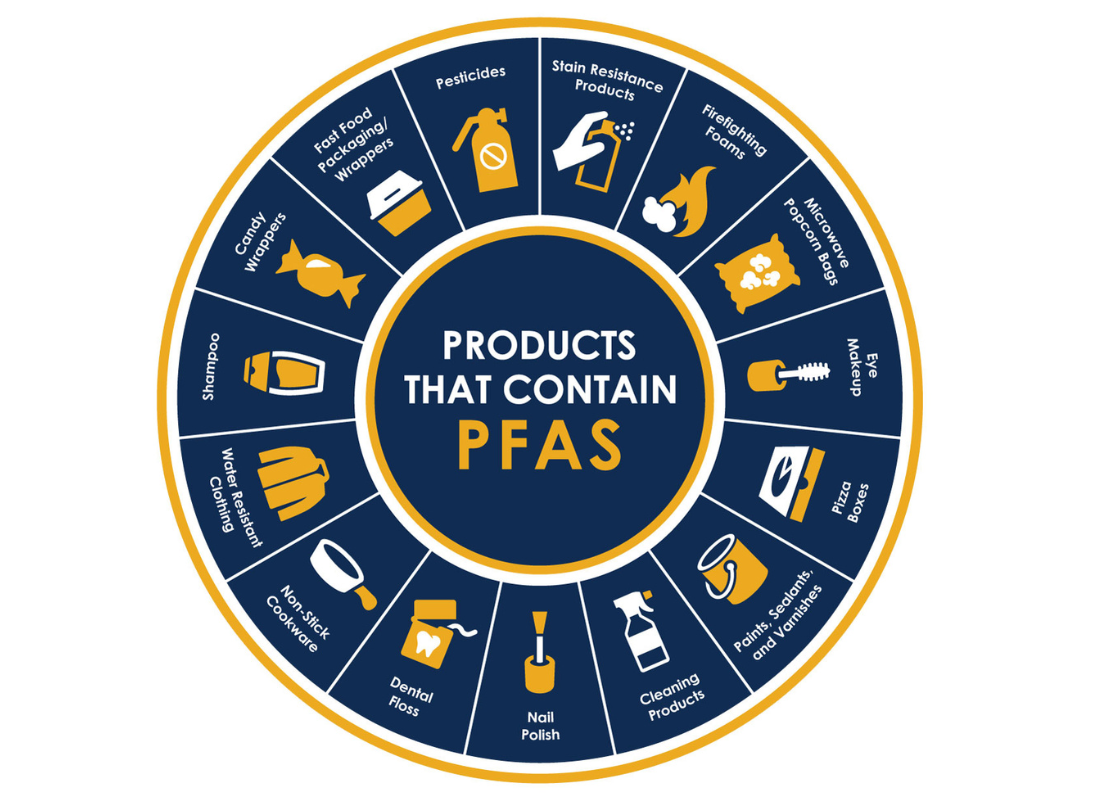
Per- and polyfluoroalkyl substances (PFAS) represent a class of synthetic chemicals that have been widely used in various industrial and consumer products for decades.
While these substances offer unique properties such as water and oil repellency, their widespread presence in the environment has raised concerns about their potential adverse effects on human health.
In this article, we delve into the disadvantages of using PFAS and explore the risks they pose to human health.
Understanding PFAS:

PFAS is a group of man-made chemicals that contain fluorine atoms bonded to carbon atoms.
This chemical structure gives PFAS their characteristic properties, including resistance to heat, water, and oil.
As a result, PFAS have been utilized in a multitude of products, ranging from non-stick cookware and food packaging to firefighting foams and stain-resistant fabrics.
Health Risks Associated with PFAS:

- Persistent Bioaccumulative Toxicants: PFAS are persistent in the environment, meaning they do not break down easily. Consequently, these chemicals can accumulate in the food chain and in human tissues over time. Prolonged exposure to PFAS can lead to higher concentrations in the body, increasing the risk of adverse health effects.
- Potential Carcinogenicity: Several studies have linked PFAS exposure to an increased risk of certain cancers, including kidney and testicular cancer. While the exact mechanisms underlying this association are still being investigated, evidence suggests that PFAS may disrupt normal cellular processes and promote the growth of cancerous cells.
- Immune System Dysfunction: Emerging research suggests that PFAS exposure may impair the function of the immune system, making individuals more susceptible to infections and other diseases. This can manifest as increased rates of respiratory infections, compromised vaccine responses, and autoimmune disorders.
- Reproductive and Developmental Effects: Exposure to PFAS during pregnancy has been associated with adverse reproductive and developmental outcomes, including low birth weight, preterm birth, and reduced fertility. PFAS can cross the placental barrier and interfere with fetal development, potentially leading to long-term health consequences for offspring.
- Cardiovascular Health Risks: Evidence suggests a link between PFAS exposure and cardiovascular disease, with studies associating PFAS exposure with elevated cholesterol levels, hypertension, and increased risk of heart disease. PFAS-induced inflammation, oxidative stress, and dysregulation of lipid metabolism may contribute to these cardiovascular health risks.
- Genotoxicity: PFAS have been shown to exhibit genotoxic effects, damaging DNA and increasing the risk of mutations and genetic abnormalities. This genotoxicity may contribute to the development of cancer and other adverse health outcomes associated with PFAS exposure.
- Liver and Kidney Damage: PFAS have been shown to accumulate in the liver and kidneys, where they can cause damage to these vital organs. Chronic exposure to PFAS has been linked to liver dysfunction, kidney disease, and an increased risk of developing metabolic disorders such as diabetes.
- Endocrine Disruption: PFAS have the potential to disrupt the endocrine system, which regulates hormone production and signaling in the body. By interfering with hormonal balance, PFAS can disrupt reproductive function, metabolism, and growth, leading to a range of adverse health effects.
Environmental Persistence:
 In addition to their adverse effects on human health, PFAS pose significant environmental risks. These chemicals have been detected in water sources, soil, and wildlife habitats around the world, posing a threat to ecosystems and biodiversity. Due to their persistence, PFAS can bioaccumulate in the environment, leading to long-term contamination and potential harm to wildlife populations.
In addition to their adverse effects on human health, PFAS pose significant environmental risks. These chemicals have been detected in water sources, soil, and wildlife habitats around the world, posing a threat to ecosystems and biodiversity. Due to their persistence, PFAS can bioaccumulate in the environment, leading to long-term contamination and potential harm to wildlife populations.
Regulatory Responses:
 In response to growing concerns about the health and environmental risks posed by PFAS, regulatory agencies worldwide have taken steps to restrict the use of these chemicals and mitigate their impact. This includes efforts to phase out the use of certain PFAS in consumer products, regulate industrial emissions, and implement measures to monitor and remediate PFAS contamination in the environment.
In response to growing concerns about the health and environmental risks posed by PFAS, regulatory agencies worldwide have taken steps to restrict the use of these chemicals and mitigate their impact. This includes efforts to phase out the use of certain PFAS in consumer products, regulate industrial emissions, and implement measures to monitor and remediate PFAS contamination in the environment.
Replacing PFAS:

This involves transitioning to alternative materials and technologies that offer similar functionality without the associated health and environmental risks. Some alternatives include using ceramic coatings for non-stick cookware, plant-based finishes for stain-resistant fabrics, fluorine-free coatings for water-repellent clothing, barrier coatings made from biodegradable materials for food packaging, and silicone-based coatings for water and oil repellency.
Additionally, bio-based lubricants, natural ingredients in personal care products, and eco-friendly sealants in construction materials can serve as substitutes. Collaborative efforts among industries, policymakers, and consumers are essential for promoting the adoption of these safer alternatives and driving innovation in materials and technologies.
Conclusion:

While PFAS offer valuable properties in a wide range of applications, their widespread use has come at a significant cost to human health and the environment. The disadvantages of using PFAS are increasingly evident, with mounting evidence linking these chemicals to a range of adverse health effects, including cancer, immune dysfunction, reproductive issues, and organ damage. As awareness of the risks associated with PFAS grows, efforts to reduce exposure and mitigate environmental contamination are crucial to protecting public health and safeguarding the planet for future generations.
Sources:
https://media.ppai.org/ppai-magazine/pfas-the-chemical-dilemma/
https://www.caymanchem.com/news/pfas-dilution-is-not-the-solution
https://www.ecoonline.com/en-us/blog/forever-chemicals
https://health.hawaii.gov/heer/environmental-health/highlighted-projects/pfas/
https://www.mdpi.com/2076-3417/13/11/6696




